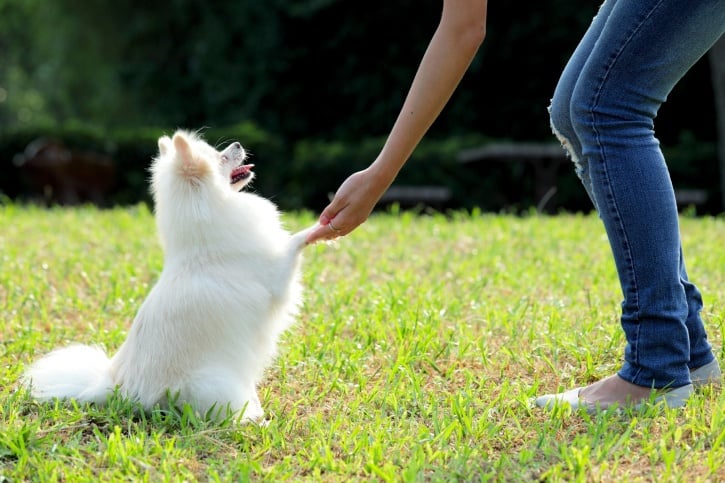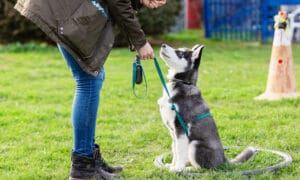“This post contains affiliate links, and I will be compensated if you make a purchase after clicking on my links.”

There are many different things you can spend your time training your dog to do. It all depends on what is most important to you. What I do know, however, is that positive reinforcement is one of the best ways to teach dogs to do just about anything. Below are some of my top training tips on how to get a reliable recall from your dog of commands and how to set them up for success.
1. Start your training sessions with luring the dog. It is the fastest and easiest way to train. An example, while teaching sit, hold the lure by the nose and slowly raise it up and over the dog’s head to get their butt to lower. However, make sure to remove the lure after about 6-12 trials so it does not become a bribe.
2. Dogs learn through association. Because of this you want to limit your movement to the hand prompt to avoid your dog picking up on a different movement. Your tone of voice can also influence what your dog learns.
3. Reward often. Don’t stop rewarding even if your dog knows the command.
4. Always start training in a low distraction area. You cannot expect your dog to perform when there are a lot of things going on around him. When first introducing the command, begin in a spot where there are zero distractions. Once your dog is proficient there, then you can start teaching in other areas.
5. After your dog learns the command, decide what level of proficiency you will reward and how good of a reward. Give different valued treat to reflect the quality of his performance. If you asked multiple times for your dog to sit, perhaps just a good dog will do. However, if he does it on the first time, then it is a good boy plus a treat and pets!
6. Always start dog training at the level your dog knows and move at your dog’s pace to the next step. How quickly you move through each step depends on the dog, not the owner. Some dogs can learn faster and some learn slower.
7. Be patient with your dog. Training your dog takes a lot of time and effort. Avoid pulling, pushing, and shoving your dog during training. If you are getting frustrated, take a break.
8. Dogs do not generalize. Just because they know how to sit on command in the house does not always mean that they will sit on command in the yard. Dogs take into account how similar or different the current situation is in comparison to what their store of past experience contains. By expanding their store of experience, you can increase their responses elsewhere.
9. Your dog is unique. Don’t compare him to another dog. They are individuals just like us and require a different amount of work and have different motivations. However, that does not make one dog less intelligent than another.
10. It is best to train off leash as much as possible if it’s safe. Because your dog does not generalize, commands that are learned while on leash may not be understood while off leash. When we really need the dog to do something, he is usually off leash. Like when chasing a squirrel and you need him to come back
About Guest Author Aly DelaCoeur and www.WhyDoesMyDog.com:
Aly DelaCoeur combines her love of dogs, years of experience, and the most up-to-date animal behavior science in WhyDoesMyDog.com. Her goal is to help you and your dog have a fuller, happier, and more rewarding relationship. Our unique platform optimizes content for consumption and sharing. Content is presented in mobile-optimized, short, to-the-point pieces designed to give just the information the user is looking for whenever they need it. All WhyDoesMyDog.com content is Creative Commons licensed to encourage sharing and reuse.



















Pingback: 10 Essential Tips to Successfully Train Your Dog – Todayz Top Stories
4dogsandalittlelady.com
Mar 24, 2016 at 3:40 pm
Number 7 and 8 are soooo huge. If I had to put money on it, I would say this is where a good majority of the frustration in training stems from. Very good list though. I suggest using a clicker to help bridge the gap between what behavior is intended to be rewarded and what behavior actually is rewarded. It helps the dog to understand what you are trying to teach him/her much faster!
I recommend a clicker but anything that makes a consistent sound would work. A pen, a clip, etc. You just want to avoid using something that can change(like your voice). Thanks for the article!